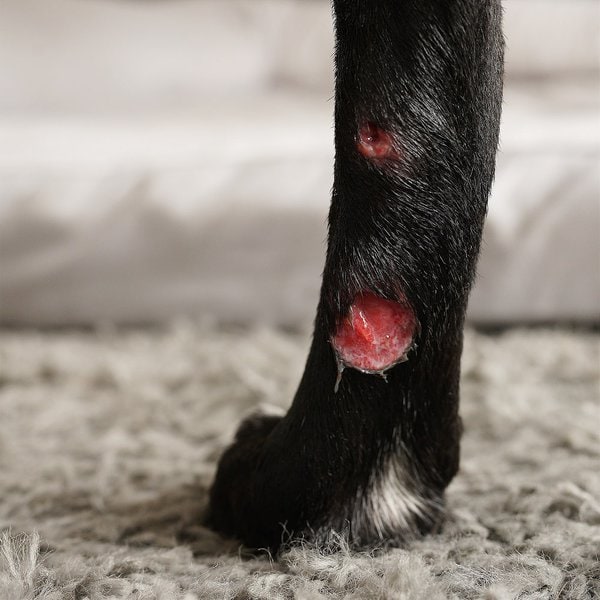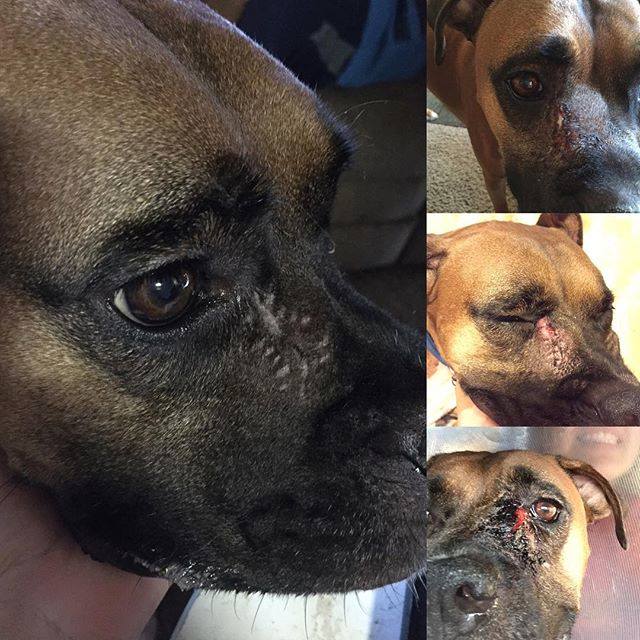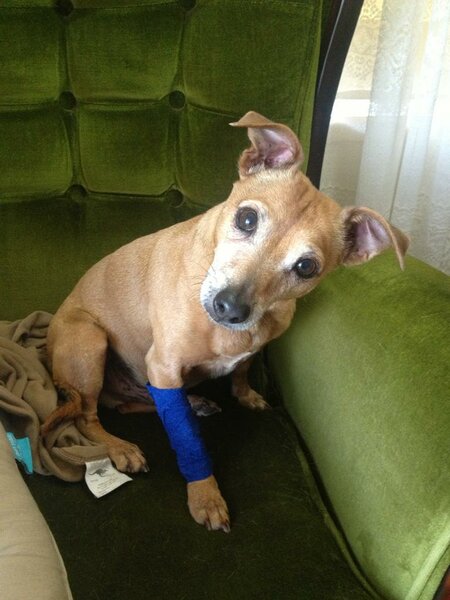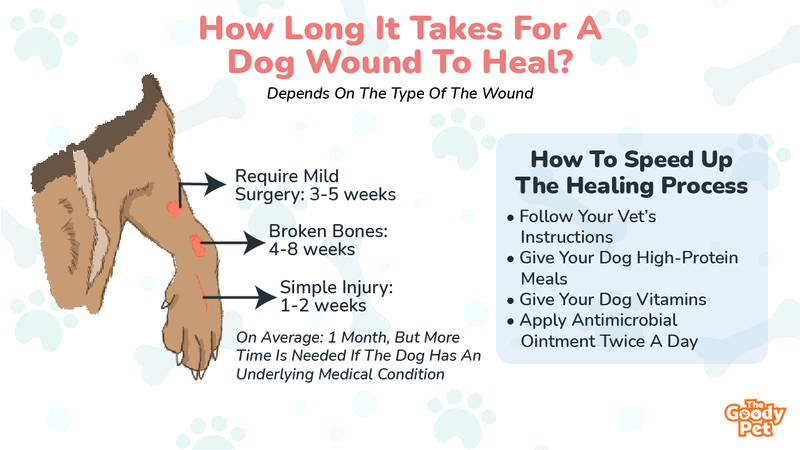Just like we may sustain injuries on certain occasions, our furry companions can sustain theirs too. And in fact, due to their very active and playful nature, they get more injuries, and it requires time to heal.
How long it takes for your dog’s wound to heal varies. It depends on the type of injury sustained. The healing process could range from the first few days to the first few months of injury.
In this article, we will see the stages of healing in dogs and how to treat your furry friend’s wound. You will also get to know how to identify when your doggie’s wound is healing and what to do if your doggie’s wound fails to heal.
However, before we proceed, let’s first see how long it takes exactly for your furry friend’s wound to heal itself.
How Long Does It Take For A Dog Wound To Heal?

The length of time it takes for your furry friend’s wound to heal varies. It depends on the type of injury sustained, your pooch’s health status, or the presence or absence of certain diseases that can interfere with healing.
On average, it takes a month for a dog’s wound to heal.
Depending on the type of injury, a simple wound or infection that requires no surgical repair can take 1 to 2 weeks to heal.
For wounds requiring mild surgical procedures, it could take 3 to 5 weeks.
Lastly, for broken bones requiring surgical treatment, cast, and physical therapy, it can take 4 to 8 weeks.
However, you should expect a longer time than this if your pooch has underlying medical conditions or requires long-term medication.
What Are The Stages Of Healing In Dogs?
The stages of wound healing in dogs are almost the same for all wound types in dogs. Generally, they are divided into four stages. They are the inflammation, debridement, repair, and maturation stage.
Inflammation
The inflammation stage is the most noticeable, and pain occurs in this stage. It starts the healing process making it important for the overall wound healing.
In this stage, the injured tissues send signals to the body for the healing process to commence. This then causes the blood vessels around the area of the wound to dilate.
The dilation allows more white blood cells and cell repair proteins to accumulate around the injured area. These white blood cells and cell repair proteins are important for wound healing in subsequent stages.
Debridement
Debridement involves the removal of dead tissue from and around the injury.
In this stage, the white blood cells that are responsible for defending the body and protecting the injured area of the wound perform this function. They kill bacteria, clean debris, and remove dead cells around the injured area.
Debridement can also be done surgically in the case when the body of your furry friend fails to clean the debris itself. A veterinarian will be responsible for helping you remove it because it requires a skilled technique.
Repair
It starts in a couple of days during the first week of the injury.
In this stage, the damaged skin is repaired and replaced with new cells and collagen fibers. This is done through the help of the cell repair proteins produced in the first stage.
Maturation
This process starts within the first three weeks after injury. Here, the rearrangement of collagen fibers formed in the repair stage takes place, and the skin is taken back to its original structure. It could take months or even years for this stage to complete.
The new skin formed is about 70 to 80% of how they were before the injury.
How Can I Heal My Dog Wound Fast?
To heal your dog’s wound fast, you should strictly adhere to your veterinarian’s instructions. Also, you should provide your canine buddy with a healthy diet, particularly those rich in proteins and vitamins.
You will also need to monitor the wound and apply antimicrobial ointment at least twice a day. This helps to inhibit bacteria growth that may otherwise slow down the healing process. You should limit your furry friend’s activity to ensure that the stitches are always intact.
Finally, in the case of deep cuts, you should regularly visit your veterinarian for cleaning, removal, and replacement of stitches and bandages.
What Can I Use To Treat My Dog’s Wound At Home?

There are times we can treat our pooch wounds at home, for example, when they have minor injuries. To do this, you should use a water-based lubricant, antiseptic solution, and antimicrobial ointment.
You will also need scissors, razors, or an electric clipper to cut the hair around the injury for easy accessibility. Finally, you should get a soft cloth for gently cleaning the area after the treatment.
However, you should take your dog to the vet if the wound is a bite, a laceration, penetrates the skin, or covers a large portion of the body. You should also visit the vet if the injury affects sensitive parts, such as the eyes, ears, nose, mouth, and genitals.
Finally, if the injury contains pus, fails to heal after three days, and the skin around the injury is well inflamed, you should meet with your veterinarian immediately.
What Is The Best Thing To Clean A Dog’s Wound?
For most dog wounds, the best thing for cleaning the wound is warm tap water or saline solution.
A saline solution, made from one teaspoon of table salt and two cups of water, is okay for cleaning the wound.
Is Neosporin Good For Dogs?
No, Neosporin is neither good nor recommended for your canine companion.
Neosporin contains antibiotic agents, namely bacitracin, neomycin, and polymyxin B. These agents kill bacteria on the skin and ensure that no bacteria can grow on the wounded skin of humans.
However, it is not considered safe to use Neosporin on canines. This is because of the agent, neomycin, which is linked to hearing loss in animals.
Is Vaseline Good For Dog Wounds?
It is not best to use vaseline on dog wounds because your canine buddy may end up licking it. It is toxic to your furry friend and can cause diarrhea and intestinal blockage when ingested.
For wound treatment of your furry friend, we recommend natural ointments made for dogs and those recommended by your veterinarian.
How Do I Know If My Dog’s Wound Is Healing?
To know if your pooch’s wound is healing, it will look clean, and the edges of the wound will be closed.
Also, the color of the skin around the injury will appear normal or pinkish-red. However, for the first few days, you may observe the injury appear red.
Why Isn’t My Dog’s Wound Healing?
Your pooch’s wound may not heal for several reasons. It could be due to your doggie’s present health, the causes of the injury, the presence of an infection, or the presence of underlying medical conditions, such as von Willebrand’s disease, anemia, or cancer.

How Do You Tell If A Dog Wound Is Infected?
To know if a dog wound is infected, there will be persistent redness, swelling, bleeding, and pus seen visibly around the infected area. Lastly, you may occasionally hear whimpers from your dog to let you know the pain it is enduring.
How Do I Tell If My Dog’s Wound Is Due To Cancer?
Cancer can be the cause of prolonged wounds in your doggie that fail to heal. It appears as a white bump on their skin. Over time, this bumps the inner surface of the bump ulcerate, and bleeding results.
A notable form of such cancer is skin or cutaneous squamous cell carcinoma. This form of carcinoma is found more in dogs living in high altitudes, such as Scottish Terriers, Beagles, Whippets, and Norwegian Elkhounds.
My Dog Wound Is Not Healing- What Should I Do?
In some cases, the wounds on our furry friends wouldn’t heal despite the treatments given to them. In this case, you will need to take your doggie to your veterinarian for proper diagnosis and treatment.
Your veterinarian will check for any underlying medical conditions and will determine the best treatment measures to take.





